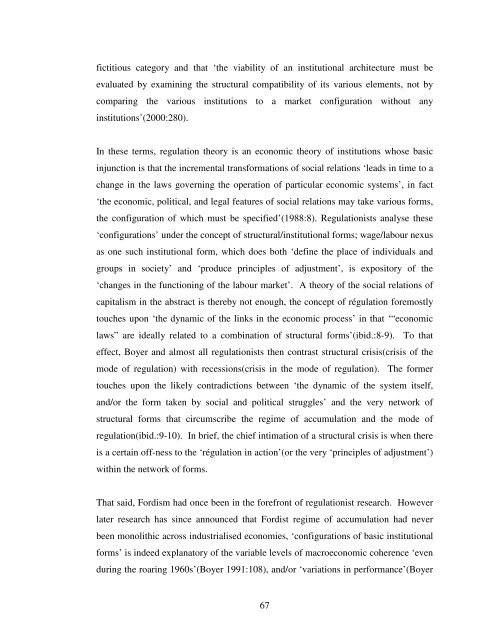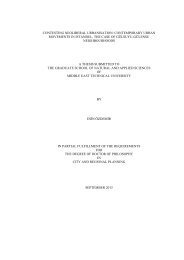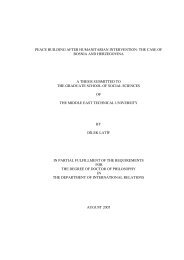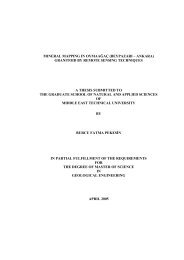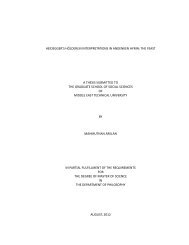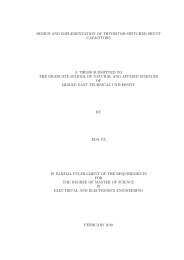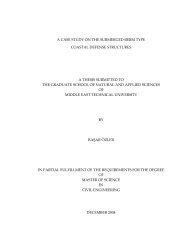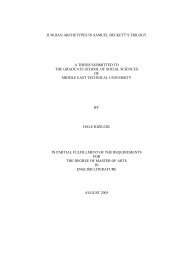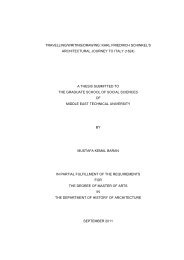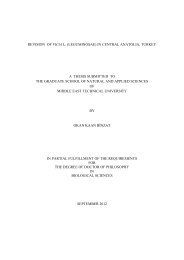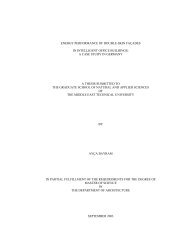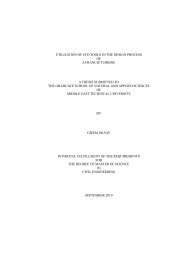View Original - Middle East Technical University
View Original - Middle East Technical University
View Original - Middle East Technical University
You also want an ePaper? Increase the reach of your titles
YUMPU automatically turns print PDFs into web optimized ePapers that Google loves.
fictitious category and that ‘the viability of an institutional architecture must be<br />
evaluated by examining the structural compatibility of its various elements, not by<br />
comparing the various institutions to a market configuration without any<br />
institutions’(2000:280).<br />
In these terms, regulation theory is an economic theory of institutions whose basic<br />
injunction is that the incremental transformations of social relations ‘leads in time to a<br />
change in the laws governing the operation of particular economic systems’, in fact<br />
‘the economic, political, and legal features of social relations may take various forms,<br />
the configuration of which must be specified’(1988:8). Regulationists analyse these<br />
‘configurations’ under the concept of structural/institutional forms; wage/labour nexus<br />
as one such institutional form, which does both ‘define the place of individuals and<br />
groups in society’ and ‘produce principles of adjustment’, is expository of the<br />
‘changes in the functioning of the labour market’. A theory of the social relations of<br />
capitalism in the abstract is thereby not enough, the concept of régulation foremostly<br />
touches upon ‘the dynamic of the links in the economic process’ in that ‘“economic<br />
laws” are ideally related to a combination of structural forms’(ibid.:8-9). To that<br />
effect, Boyer and almost all regulationists then contrast structural crisis(crisis of the<br />
mode of regulation) with recessions(crisis in the mode of regulation). The former<br />
touches upon the likely contradictions between ‘the dynamic of the system itself,<br />
and/or the form taken by social and political struggles’ and the very network of<br />
structural forms that circumscribe the regime of accumulation and the mode of<br />
regulation(ibid.:9-10). In brief, the chief intimation of a structural crisis is when there<br />
is a certain off-ness to the ‘régulation in action’(or the very ‘principles of adjustment’)<br />
within the network of forms.<br />
That said, Fordism had once been in the forefront of regulationist research. However<br />
later research has since announced that Fordist regime of accumulation had never<br />
been monolithic across industrialised economies, ‘configurations of basic institutional<br />
forms’ is indeed explanatory of the variable levels of macroeconomic coherence ‘even<br />
during the roaring 1960s’(Boyer 1991:108), and/or ‘variations in performance’(Boyer<br />
67


